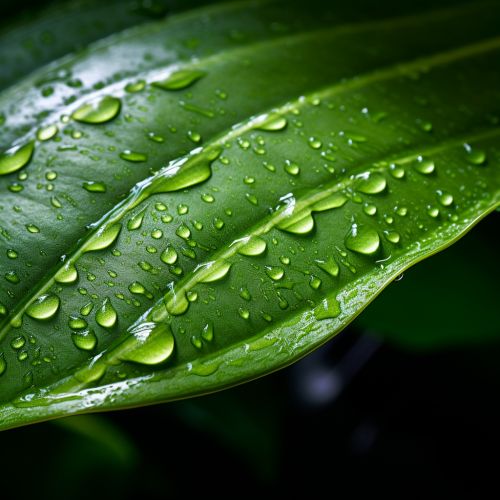Mechanisms of Plant Defense Mechanisms Against Stress
Introduction
Plants, as sessile organisms, are constantly exposed to a variety of environmental stresses. They have developed a range of defense mechanisms to cope with these stresses. This article delves into the various mechanisms of plant defense against stress, including physical and chemical defenses, as well as the role of signaling molecules and the genetic basis of these defenses.
Physical Defenses
Plants have evolved a number of physical defenses to protect themselves from environmental stresses. These include structural features such as thick cuticles, bark, and trichomes, as well as the ability to alter their growth patterns in response to stress.


Cuticles and Bark
The cuticle is a waxy layer that covers the surfaces of leaves and stems, providing a barrier against water loss and pathogen invasion. The thickness and composition of the cuticle can vary depending on the environmental conditions, with plants often producing a thicker cuticle in response to drought stress.
Bark, on the other hand, is a protective layer that covers the stems and roots of woody plants. It serves as a physical barrier against mechanical damage, insect attack, and fire. The outer layer of the bark, known as the periderm, is particularly resistant to environmental stresses.
Trichomes
Trichomes are hair-like structures that are found on the surfaces of many plant species. They serve a variety of functions in plant defense, including physical deterrence of herbivores, secretion of defensive chemicals, and reflection of harmful UV radiation.
Growth Patterns
Plants can also alter their growth patterns in response to environmental stress. For example, they may grow deeper roots in response to drought, or develop a more compact growth form in response to wind stress. This ability to modify their growth in response to environmental cues is a key aspect of plant defense.
Chemical Defenses
In addition to their physical defenses, plants also produce a wide range of chemical defenses against stress. These include secondary metabolites, reactive oxygen species, and signaling molecules.
Secondary Metabolites
Secondary metabolites are compounds that are not required for the basic metabolic functions of the plant, but play important roles in defense. They include a wide range of compounds, such as alkaloids, terpenoids, and phenolic compounds, many of which have toxic or deterrent effects on herbivores and pathogens.
Reactive Oxygen Species
Reactive oxygen species (ROS) are highly reactive molecules that are produced by plants in response to stress. While they can cause damage to plant tissues, they also play important roles in signaling and defense. For example, they can trigger the production of defensive compounds, and can directly kill invading pathogens.
Signaling Molecules
Plants also produce a variety of signaling molecules in response to stress. These include hormones such as abscisic acid (ABA), which is involved in responses to drought and salinity stress, and salicylic acid (SA), which is involved in defense against pathogens.
Genetic Basis of Defense Mechanisms
The defense mechanisms of plants are underpinned by a complex network of genes and regulatory elements. These include genes that encode for defensive proteins and enzymes, as well as transcription factors that regulate the expression of these genes.
Defensive Proteins and Enzymes
Many of the physical and chemical defenses of plants are mediated by proteins and enzymes. For example, the production of secondary metabolites is often catalyzed by specific enzymes, while the formation of physical barriers such as the cuticle and bark involves the action of structural proteins.
Transcription Factors
Transcription factors are proteins that bind to specific DNA sequences, controlling the transcription of genetic information from DNA to mRNA. They play a crucial role in regulating the expression of defense-related genes, allowing plants to rapidly and precisely adjust their defenses in response to environmental cues.
Conclusion
Plants have evolved a diverse array of defense mechanisms to cope with the various stresses they encounter in their environment. These mechanisms involve a combination of physical and chemical defenses, as well as complex genetic regulatory networks. Understanding these defense mechanisms can provide insights into how plants survive and thrive under challenging conditions, and may have applications in agriculture and conservation.
